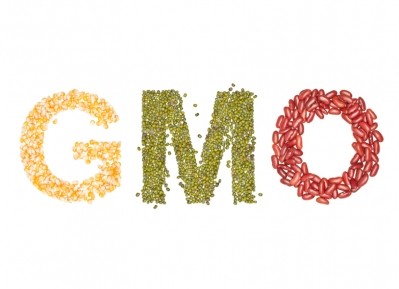GM NK603 corn research generates debate in Europe and the US
Design of GMO corn 'equivalence' study flawed: US animal scientist

The study, published in the Nature journal, Scientific Reports, alleges that GM NK603 corn and its corresponding non-GMO corn variety are not substantially equivalent.
The establishment of compositional ‘substantial equivalence’ is a key starting point requested by regulatory agencies for assessing the safety of a GMO crop and food.
Dr Michael Antoniou at King’s College London, who led the research in question, commented:
“Our study clearly shows that the GM transformation process results in profound compositional differences in NK603, demonstrating that this GMO corn is not substantially equivalent to its non-GMO counterpart.
“The marked increase in putrescine and especially cadaverine is a concern since these substances are potentially toxic, being reported as enhancers of the effects of histamine, thus heightening allergic reactions, and both have been implicated in the formation of carcinogenic nitrosamines with nitrite in meat products.“
He added that their findings disprove industry and regulatory agency claims that NK603 is ‘substantially equivalent’ to its non-GMO counterpart and suggest that a more thorough evaluation of the safety of consuming products derived from this GMO corn on a long term basis should be undertaken.
Spotlight now on official regulation of GM crops?
Peter Melchett, policy director at the UK’s Soil Association, argued that this dramatic new research throws real doubts on the official regulation of GM crops worldwide:
“Using the very latest scientific techniques (‘omics’ technologies - transcriptomics, proteomics, metabolomics, epigenomics and mirnomics), which were not available when GM crops were first introduced, scientists have shown that GM crops can be significantly different from their non-GM equivalents.
“The researchers also found that spraying with Roundup (which is routinely applied to many GM crops) also altered the molecular profile of the crop. This throws into disarray all GM safety testing, which is based on the assumption that GM crops are usually ‘substantially equivalent’ to non-GM versions, and therefore do not need any extensive safety testing.”

Experimental design problems
FeedNavigator asked prominent geneticist, Alison Van Eenennaam, who is based in the Department of Animal Science at the University of California, to assess the study. She told us: “To perform such an evaluation requires a common agreement as to what substantial equivalence means, and what constitutes an appropriate comparator(s). Unfortunately, not such common understanding exists.”
Furthermore, she noted: “Unfortunately, there are a number of experimental design problems with the Mesnage et al. (2016) paper that complicate the interpretation of the results, and as concerning there appear to be confounders that further complicate the analyses.”
Those flaws in design, claimed Van Eenennaam, include the following:
- Only a single replicate of each treatment (n=1) at a single location (over two years) is analyzed with no biological replication or randomization of locations to remove site variability.
- The data from the two cultivations in different years were inexplicably merged prior to analysis which made it impossible to determine if results or trends were consistent or reproducible between years
- No inclusion of non-GM reference-varieties (conventional commercial hybrids) representative of those that would be normally grown in the areas where the field trials are performed to put some figures and context to the natural biological variation in the composition of non-GM corn comparators
- No discussion of correction for multiple comparisons (by chance one in every 20 comparisons would be expected to be significant at the p<0.05). If doing multiple comparisons, it is necessary to do a multiple-comparison correction
- There appears to be evidence of different levels of fungal (Gibberella moniliformis Maize ear and stalk rot fungus) protein contamination between the three groups. [See Supplemental Dataset 5 where Tubulin alpha chain OS=Gibberella moniliformis (strain M3125 / FGSC 7600)] appears as the protein that had the biggest fold change between control and GM lines. If there were differing levels of fungal infestation among the groups, this would also confound the data.
The University of California scientist also wrote an extensive reaction to the study in blog format, which can be accessed here - reaction to that piece was swift on Twitter.
Elegant take down of some activist science. Bravo to whichever reporter took the time to reach out to her to get full story. https://t.co/F5dFWQffZQ
— Jeff Donald (@jeffdonald) 4 January 2017
Other experts have weighed in on the study, with comments posted on the UK’s Science Media Center.
'The science is good as far as it goes'
Johnjoe McFadden, professor of molecular genetics at the University of Surrey, said:
“The science is good as far as it goes. But the analysis only emphasizes the inadequacy of the ‘substantial equivalence principle’. How equivalent does it need to be? If you perform this detailed level of analysis on any perturbation of any organism you will detect this level of change – organisms are extraordinary sensitive and, for example, similar changes are produced when treated with e.g. pesticide or herbicides or when attacked by pests.
“I would expect that practically any perturbation to an organism will generate a response that can be detected by these powerful techniques – that is after all what life does.
“So all it shows is that GM, like pesticides, herbicides, drought, predation or even growing in a different field will produce a response by the organism. If GM was banned on these grounds, then so would all herbicide pesticides and indeed anything that causes a change (which is everything).”
Dr Joe Perry, former chair of the European Food Safety Authority (EFSA) GMO Panel, said:
“In contrast with compositional analysis, which is done for every application, and reported by EFSA, and which involves proper replicated field trials, this study appears to have been done with single, unreplicated plots.
“Therefore it is not possible to say with any certainty whether the differences reported are due to differences between the treatments or differences between the two fields (or two plots within the fields) used.
“In other words the basic tenets of experimental design seem not to have been followed. For that reason I could not yet describe this as a thorough piece of science.
“Further details about the conduct of the experiment would be useful to confirm or otherwise this initial impression."
Source: Scientific Reports 6, Article number: 37855 (2016)
Published online ahead of print: doi:10.1038/srep37855
Title: An integrated multi-omics analysis of the NK603 Roundup-tolerant GM maize reveals metabolism disturbances caused by the transformation process
Authors: R Mesnage, SZ Agapito-Tenfen, V Vilperte, G Renney, M Ward, GE Séralini, R O Nodari and MN Antoniou















